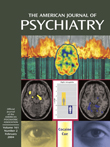To the Editor: I would argue that Dr. Kapur’s model of psychosis as aberrant salience is important, not because he fingered dopamine as the culprit in psychosis, but because he emphasized that any meaningful neurobiological model must account for cross-sectional as well as longitudinal clinical observations. While it is implicit in his discussion, I wish he had stressed more that intimate knowledge of descriptive psychopathology and phenomenology is essential to building such clinically informed models. To illustrate this, I apply Dr. Kapur’s model to a disease other than schizophrenia: alcoholic hallucinosis.
Our patient was admitted to an inpatient unit with a well-formed persecutory delusional system and auditory hallucinations following years of heavy drinking. He had attempted to make cassette tapes of the voices he heard saying derogatory things. No antipsychotics were given, and he made a restitutio ad integrum. Two weeks after admission, he sat down with me to listen to the tapes. After intently listening to an empty tape, he agreed with me that there was nothing recorded, but he could not explain why and stated, “I know that the voices are on there because I heard them and recorded them.”
It is instructive to use this case to view the lack of insight into past psychosis and memories of delusions as opposed to delusional memories from within Dr. Kapur’s framework. Memories of delusions can be defined as the accurate recollection of deluded thoughts and experiences that a person had while psychotic. These memories are not typically challenged once the person has recovered but can become integrated into the person’s experience of himself. Memories of delusions are not to be confused with delusional memories
(1): the latter are recollections of past events that either never happened or that happened but become meaningfully reinterpreted in the context of current psychosis. Delusional memories are evidence of ongoing psychosis and are potentially responsive to antipsychotics. If memories of delusions are not recognized and are confused with actively ongoing psychosis, patients are inappropriately diagnosed and treated.
Even though the patient in my case report was wrong in his conviction that there should be voices on the tape, it would be wrong to label him as currently psychotic. Rather, he had poor insight into his past psychosis. He did not recognize his previous psychotic state as a morbid change in himself. Most important, antipsychotic medication is not indicated since the pathological, meaning-imbuing mechanism is no longer present. Only psychological mechanisms will reinterpret past experience and lead to insight into past psychosis. Clinically, we know that this is difficult because there is continuity between the experience of psychosis and normality and because psychotic experiences are even more compelling than normal experiences since they are imbued with so much salience.

